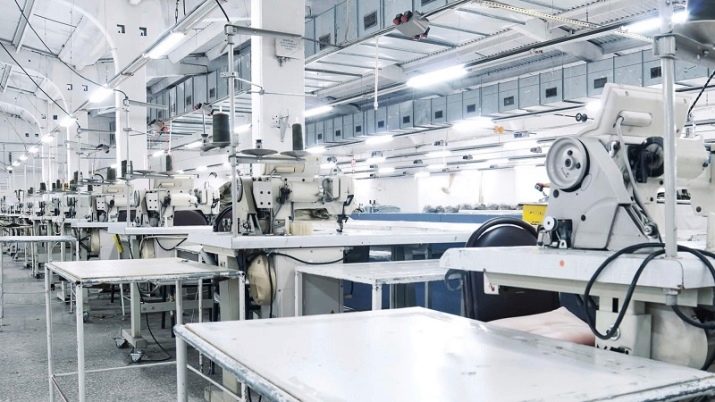All about the profession of a sewing technologist

The question of choosing a future profession at one time or another becomes in front of each person. Its solution must be approached as responsibly and seriously as possible, it is recommended to take into account a number of various factors. Today in our article we will analyze the features and distinctive features of such a specialty as a sewing technologist.
Peculiarities
First of all, it must be said that a sewing technologist is a person who holds a managerial position in a workshop for sewing a variety of products (for example, clothing, home textiles, etc.). This profession is considered to be quite in demand in the labor market, respectively, at the moment you can find a large number of open vacancies for the position of master technologist.
This profession is quite contradictory in nature, however, it is customary to refer it to the category of workers. This is due to the fact that in the course of fulfilling his duties, the employee for the most part uses his practical skills and abilities (although to a certain extent the intellectual component of his career is also preserved).

Responsibilities
Professional duties of a sewing technologist are regulated by job description... The potential employer should familiarize you with this document even during the employment process (for example, during a personal interview). When studying the job description, you should be as careful as possible, you must make sure that you are able to perform all the tasks that the employer entrusts to you.Remember that for non-fulfillment or incorrect fulfillment of your professional functions, you may be subject to responsibility and lose their position.
The standard tasks of a sewing specialist include:
- creation of author's models of garments;
- development of appropriate sewing drawings;
- maintaining professional documentation;
- writing reports at the request of the management;
- making calculations of the costs required to create a developed product;
- conducting briefing in relation to subordinate employees;
- carrying out their work strictly in accordance with technological standards and norms;
- using the world's best practices in their daily work activities;
- writing technical specifications;
- training of new workers in the shop;
- performing their work strictly in accordance with schedules and plans, etc.
Generally speaking, a job description is a standardized document. However, the employer, if desired, can make various additions and adjustments to it.
Accordingly, you must be able to adapt to changing external conditions.

Knowledge and skills
In order for a specialist to be able to perform his work tasks as efficiently and competently as possible, he must have the appropriate practical and theoretical training. The compulsory competencies (knowledge and skills) of a sewing technologist include:
- knowledge of the legal framework that regulates the activities of a specialist (laws, by-laws, decrees);
- the ability to apply in practice the technology of sewing production;
- knowledge of the Labor Code of the Russian Federation, understanding of their rights and obligations;
- knowledge of safety regulations and labor protection;
- the ability to determine the type and distinctive characteristics of materials and fabrics;
- knowledge of all existing types of garments;
- the ability to work in specialized computer programs;
- the ability to make sketches, drawings, create stencils and patterns.
At the same time, it is believed that in order to fully perform his work functions, a specialist must have not only the necessary professional qualities, but also certain personal characteristics. Among them are usually distinguished:
- leadership skills;
- creative and out-of-the-box thinking;
- ability to perform routine work;
- attention to detail;
- accuracy.

Education
Before applying for the position of a sewing technologist, you need to pass the appropriate education. Depending on the requirements of different employers, as well as your professional and career ambitions, you can apply to a higher (university, institute, academy) or secondary specialized educational institution (for example, a college or technical school). Accordingly, you can leave school after 9th or 11th grade.
In the process of getting education you have to pay close attention to obtaining the necessary professional skills and abilities, since your professional success largely depends on these qualities. However, do not forget about theoretical training - try to get the highest possible grades, as many employers in the process of employment may require you to provide an appropriate extract from your diploma.
At the same time, if you plan to develop as a professional and move up the career ladder, you should not limit yourself to obtaining a basic education. Even in the process of carrying out their professional activities, constantly attend a variety of educational activities: master classes, conferences, lectures, seminars.
Thanks to this, you will stay abreast of all the latest trends in the professional field, and you will also be in demand in the recruiting market.

Where does it work?
After graduation, the young specialist starts looking for a job.However, it is recommended to apply for starting positions without strict requirements. After you have worked at the entry level for several years and have gained the necessary professional experience, you can look forward to a promotion.
Most often, specialists working in the field of garment production work at such enterprises:
- factories for the production of clothing and other garments;
- studio;
- clothing repair shops;
- fashion houses;
- organizations for the standardization of products that are produced by garment factories;
- shops of evening and wedding dresses.
At the same time, employees are involved in both the private sector and government agencies.








